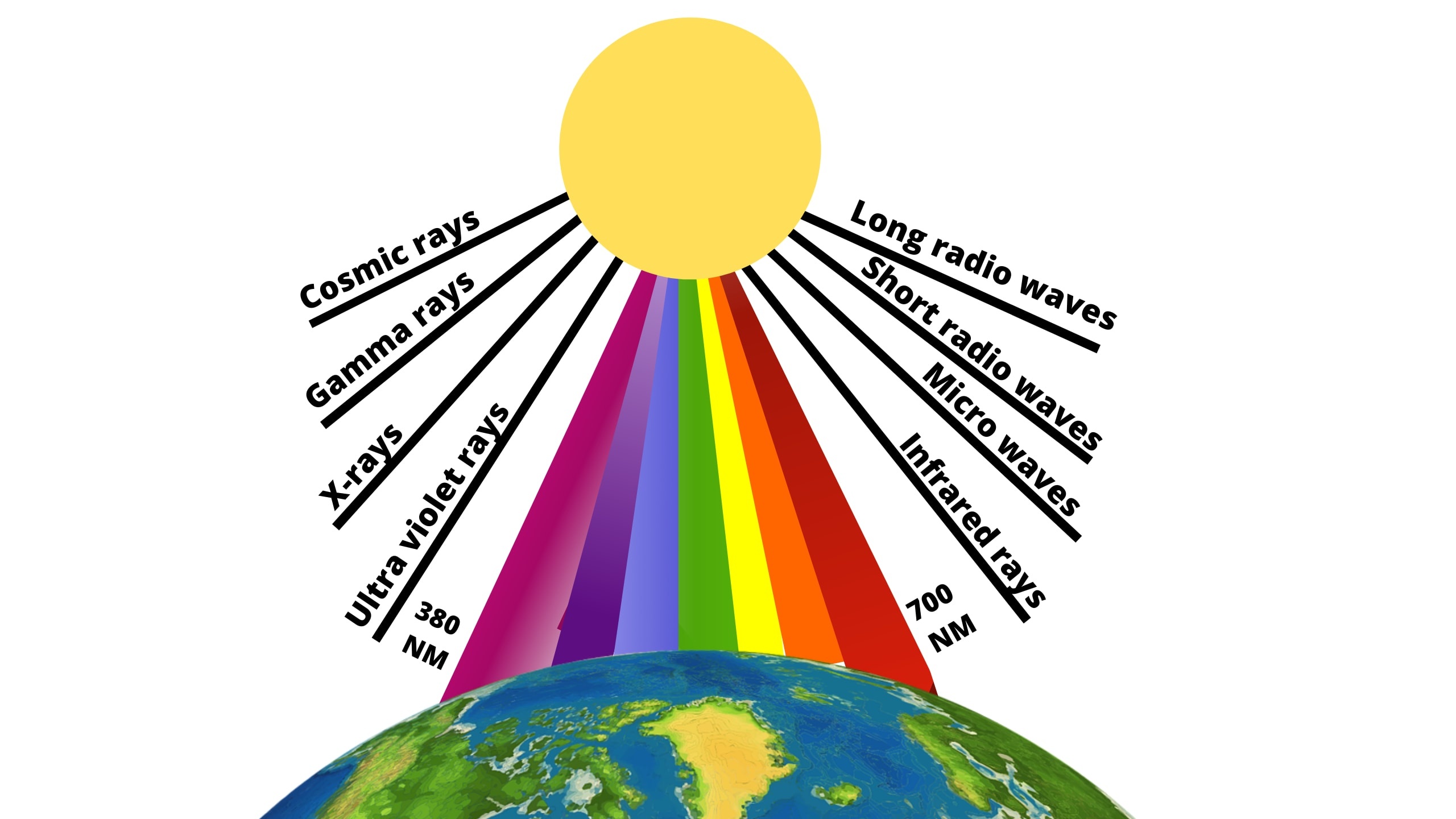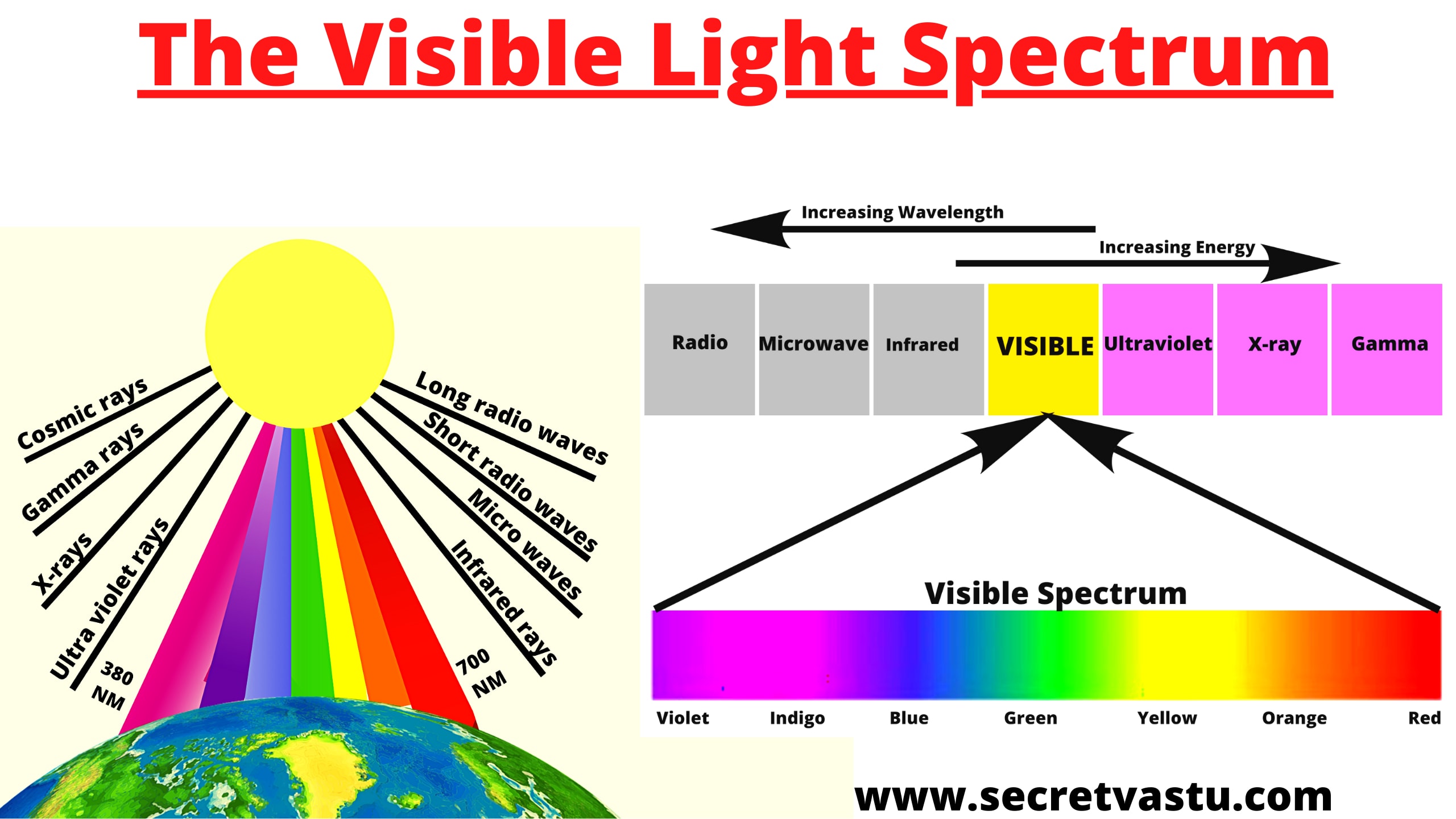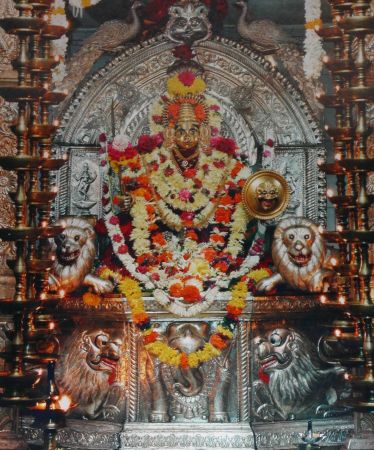Vastu Tips For Color|
Aug 24, 2019 . by Sanjay Kudi . Source

Colors and emotions are closely connected with each other. Different colors can evoke different emotions, depending on the color and its use in your home. It is very important to understand the psychological and physiological effects, colors have on a person.
In this article we will explain how colors affect your emotions and what impact colors can have on your life.
Things You Are Going To Learn Further:
1- WHAT IS COLOR
2- COMPONENTS OF A COLOR
3- THE PSYCHOLOGICAL EFFECTS OF COLORS
4- ANCIENT CHROMOTHERAPY (COLOR THERAPY)
5- THE MEANING OF COLORS
6- ADVANTAGES OF VASTU COMPLIANT COLORS IN ALL 16 ZONES
7- 16 VASTU ZONES AND THEIR COLORS
WHAT IS COLOR?
Light is the only energy which can be seen in the form of color. However, light in itself has no color, though it does have various wavelengths, some of them (ultraviolet and infrared light etc.) are invisible to us and some are visible.
A typical human eye can detect wavelengths from approximately 380 to 700 nanometers (nm). Electromagnetic radiation in this range is called visible light. In other words, light is energy and the phenomenon of color is a result of the interaction between this energy and matter.

All the colors which are visible to us, vary from a wavelength of around 380 nm (blue-purple light) to 700 nm (red light). The rest of the spectrum have wavelengths too large or too small for us to detect.
COMPONENTS OF A COLOR–
As per the Munsell System, colors contain three main components:
Hue – Hue is the overall color name such as red, yellow, orange etc.
Value – Value is the level of darkness or lightness of a color.
Chroma – The saturation of a color.
THE PSYCHOLOGICAL EFFECTS OF COLORS–
Is color such a powerful force? Can it affect our lives?
The answer is, yes.
Colors have a profound effect on our subconscious mind. Studies in the field of psychology, architectural psychology, chromotherapy, neuropsychology shows that human response to color is total. It influences humans psychologically as well as physiologically.
Biological response to color is entirely physical in nature. The human response to the color is in fact a response to the electromagnetic energy of the light waves. Studies have shown that even if a person is blindfolded his pulse will noticeably change when exposed to a certain color. For instance, if a blindfold person is exposed to red color, his or her pulse will increase and on the other hand if he or she is exposed to the color blue, his or her pulse will decrease.
Therefore, what color you paint on the walls of the house is not just a matter of aesthetics. It is a powerful tool which has many influences in our everyday lives. For instance, it affects the following things-
- Emotions
- Health
- Mood
- Thought Process
- Working efficiency
- Energy level
Different colors generate different emotions in your mind. Working efficiency may increase or decrease, depending on the combination of color and direction of your working space. If there is some imbalance in the color of a particular space and the location of it, then it may cause disconcerting, distracting and flickering effect.
Studies have shown that each color possesses frequencies of a specific vibration, and each vibration is connected to a different physical symptom. We can use these vibrations or energies to our advantage.
As per many architectural psychologists, colors communicate with us on a sensory, symbolic and emotional level and they play a strong role in shaping our reality.
ANCIENT CHROMOTHERAPY (COLOR THERAPY)–
Chromotherapy or color therapy is an ancient form of healing that was prevalent in several ancient cultures. Some of them are as follows –
- India (Ayurveda)
- Egyptians
- Greece
- Chinese
Chromotherapy is also known as light therapy and light is considered to be one of the most effective and purest healing force. Light affects physical as well as etheric bodies. Colors generate fields of energy that activates the biochemical and hormonal processes in our body.
The ancient Egyptians, Greeks and Indians used color in different ways to treat a variety of diseases. According to Chromotherapy, when the color balance is disturbed, psychological and physical problems occur. The diseases caused by the imbalance of the color can be cured by restoring the proper balance of color energies of the body through color healing or chromotherapy.
THE MEANING OF COLORS–
Each color has an association with a response our subconscious mind has when we internalize it. So let’s understand what each color means and their effects:
Red
Association – Power, passion, love, warning, danger and determination. Red is a color of energy.
Effects – Increases respiration rate, raises blood pressure and metabolism.
Orange
Association – Sunshine, joy, wisdom, desire, enthusiasm and success. Orange color is a combination of high energy color red and happiness of yellow.
Effects – Increases mental activity, optimism and creativity. You will find your heart beating a little faster when around red color. This color must not be overused in the house.
Blue
Association – Coolness, trust, spiritual, peaceful, idealistic. Blue color is a symbol of logic and intelligence.
Effects – Blue color helps the body to produce chemicals that are calming. It also helps in improving the concentration level and productivity.
Yellow
Association – Happiness, laughter, good times, optimism, honor and hope. Yellow is the color of the mind and the intellect. However, yellow is also associated with fear and cowardice. It is also an attention getter color.
Effects – It makes you feel optimistic because the brain releases more serotonin (feel good chemical in the brain) when you are around yellow color. It also provides mental clarity. Though it can have disturbing effects if it is overused. According to some studies babies cry more in yellow colored rooms.
Green
Association – Growth, life, health, harmony, compassion, fertility and freshness. Green is the color of nature. The color green is associated with prosperity, wealth and safety.
Effects – Green color is thought to have a calming effect. It slows our metabolism. Green color has a great healing power.
Pink
Association – Love, vulnerability, passiveness, youth, feminine, innocence and joyfulness. It is tied to ideas of unconditional love and playfulness. It also associates with physical weakness and immaturity.
Effects – Pink color calms your mind and it is very helpful in reducing violent behavior of someone. Pink color calms the blood pressure and heart beat. It also fills up your bedroom with harmony and romance.
Purple
Association – Dignity, wealth, royalty, power, luxury, sophistication, arrogance and mystery. Light purple color also represents romance and delicateness while dark shades of purple are identified with fear and sorrow.
Effects – Purple color stimulates the brain activity which helps in problem solving. Since it is also considered the color of imagination, it increases creativity.
White
Association – Purity, cleanliness, innocence, goodness, light, and simplicity. White color is also associated with perfection. However, some negative associations are also there with white color like emptiness and isolation.
Effects – It gives you a sense of peace and hope. It creates a sense of order and professionalism. White color is immensely helpful in inner cleansing and purification of your emotions.
Grey
Association – cool, elegant, balanced, conservative and neutral. The grey is a diplomatic color which is considered to be the color of intellect and compromise. It is also associated with loss and depression.
Effects – Grey color creates a sense of calm and composure. Grey color does not energize, rejuvenate or excite. But, too much grey, particularly a dark grey shade can make you feel depressed and sad.
Black
Association – Aggression, authority, intelligence, power, formality, elegance, evil, gloom and emptiness. Black color is seen as a mysterious color. It is also connected with fear and the unknown.
Effects – Black color evokes strong emotions.
ADVANTAGES OF VASTU COMPLIANT COLORS IN ALL 16 ZONES–
- Increased Creativity
- Self-Confidence
- Improved Immunity
- Refreshing sleep
- Heals Depressions
- Improvement in Decision making ability
- More Positive And Creative Thoughts
- Increased Concentration Power In Kids
These advantages of vastu compliant colors in all 16 vastu zones will eventually lead you to amazing FINANCIAL GROWTH, HEALTH BENEFITS and OVERALL PROSPERITY in your life.
16 VASTU ZONES AND THEIR COLORS–

There are 16 Vastu Zones in the Vedic Vastu Shastra which govern each and every aspect of our life. Studies have shown that Vastu compliant 16 Zones will help you achieve a balanced state of mind and body. This state of balance will lead you to a prosperous, peaceful, happy and healthy life.
Each of the 16 vastu zones has its own attributes and effects and they are all governed by their own specific element. All these vastu zones can be balanced with the help of appropriate colors to get the desired results in life. Let’s have a look at the appropriate colors for all 16 Vastu Zones and their effects:
BLUE COLOR–
The most vastu compliant color for NNW, North, NNE and NE Zones is blue.
- North-North-West (NNW) Zone
- North Zone
- North-North-East (NNE) Zone
- North-East (NE) Zone
Energy of vastu compliant North-East (NE) zone makes your subconscious more receptive to new ideas. Hence, blue color in NE zone will help you conceive new and creative ideas.
North is one of the most important zones of the house when it comes to money and prosperity. So the walls in this zone should also be painted in blue color.
Red color works as an anti-element for these zones. The presence of red color in North will hamper your financial growth. The imbalanced NNE zone will cause severe health problems, including lack of immunity and chronic diseases.
GREEN COLOR–
Green is the most appropriate color for the ENE, East and ESE Zones.
- East-North-East (ENE) Zone
- East Zone
- East-South-East (ESE) Zone
Green color in the East direction of your house is immensely helpful in expanding your social connections to lead a highly successful public life. The positive energy generated by a vastu compliant East zone facilitates social connectivity.
The walls of the ENE zone of your house painted in light blue color will attract positive energy that will bring inner happiness and a sense of leading a meaningful life.
Grey or white color is considered an anti-color for ENE, East and ESE zones. Grey or white color in ESE zone causes anxiety and restlessness. This will have negative impacts on your personal life as well as your professional life.
LIGHT RED AND PINK COLOR–
SE, SSE and South Zones are related to fire element. Therefore light shade of red and soft pink colors are the best choices for these three vastu zones.
- South-East (SE) Zone
- South-South-East (SSE) Zone
- South Zone
Light red or pink color in SE improves cash flow and also helps in the recovery of blocked payments. SSE zone provides power and confidence to the family members if this particular area is painted in light and soothing red color or soft pink color. It is advised to prefer pink color over any shade of red color.
These three directions belong to the fire element and the presence of blue color (water element) will create imbalance here. There will always be insufficient cash flow if the SE zone is imbalanced by its anti-elements.
YELLOW COLOR–
You should paint SSW and SW Zones in yellow color to get the desired result from these vastu zones. In North-West (NW) zone, you should use light yellow or cream color for best results.
- South-South-West (SSW) Zone
- South-West (SW) Zone
- North-West (NW) Zone
South-West is the zone of skills, family harmony, stability in life and relationships. The yellow color in the South-West (SW) will not only enhance your skills but you will also be able to acquire new skills.
Blue color in the South-South-West (SSW) direction results in your energy, money and efforts being wasted on unimportant and fruitless things.
WHITE/CREAM/OFF-WHITE COLORS–
Most suitable colors for WSW, West and WNW Vastu Zones are White, Cream and Off-White in light and soothing shade. These colors are also considered neutral colors for other vastu zones. You can also opt for silver or grey color as an alternative.
- West-South-West (WSW) Zone
- West Zone
- West-North-West (WNW) Zone
Grey color in the west zone is good for money, as well as gains in every aspect of life. You should keep the WNW zone balanced as it helps you to overcome your depression and negative thoughts. Therefore, you should use these colors for the walls of the WNW zone.
SOME IMPORTANT VASTU TIPS–
- Taking an accurate compass reading is very important and you need to be very precise in it. Once the directions and the 16 vastu zones of your property accurately mapped with the help of a vastu compass, you can easily choose the appropriate colors for all the zones.
- If there is any confusion while choosing the color for any specific area, off-white and light cream colors are the best options. These colors are considered neutral colors and they don’t have any negative effects on the occupants.
- Ensure to paint the whole ceiling of your house in the white color.
- Always make sure to choose lighter and soothing shades of colors for the walls and ceilings of your house.
- Do not overuse a single color in any of the 16 zones.
- Darker shades of red and black color must be avoided even in their respective vastu zones.

